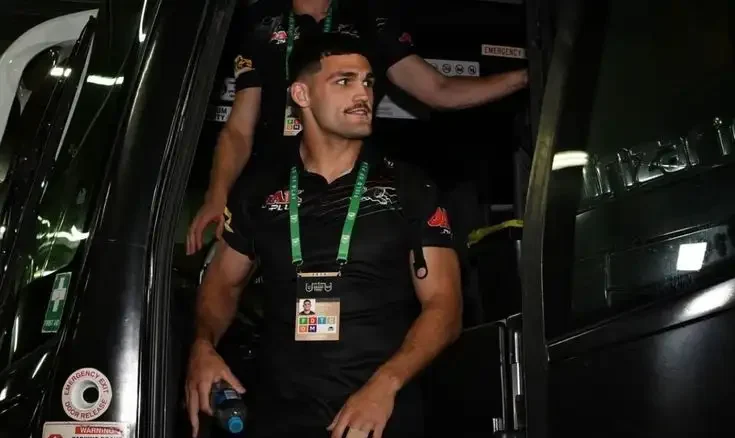B2B marketing strategy has evolved as we approach 2025. Research-driven companies grow three to ten times faster and become up to two times more profitable than competitors who don’t invest in research. Many businesses still struggle to stand out in the crowded B2B market.
Modern B2B marketing faces real challenges. Seven people now influence the average B2B buying decision. Sales cycles stretch between four and eight months. B2B marketing strategies have never been more vital. Online content affects 90% of B2B buyers’ purchasing decisions. The average conversion rate for B2B companies remains around 2%.
This detailed guide outlines eight proven strategies that are effective in 2025, supported by real-life examples. Nearly 70% of B2B marketers now put more resources into brand-building initiatives. Social media has become more important than formal referrals. More than 60% of buyers check new service providers on social platforms. About 83% of B2B marketers use social advertising.
You might want to scale your business like Cognism (which grew from $3M to over $100M in ARR) or improve your marketing results. This guide gives applicable information for the modern B2B marketer. Let’s take a closer look.
What is a B2B Marketing Strategy in 2025?
A B2B marketing strategy in 2025 provides a detailed plan for businesses to reach, participate with, and convert other companies through targeted, evidence-based approaches. The modern B2B marketing approach focuses on streamlined, sustainable growth that delivers measurable outcomes, unlike the “growth at all costs” mentality from previous years.
How B2B marketing has evolved
B2B marketing has undergone significant transformation over the past several years. Traditional approaches depended on trade shows and direct mail. Modern B2B marketing now welcomes digital channels, tailored content, and analytics-driven decisions.
Content marketing serves as the lifeblood of successful B2B strategies. Research shows 83% of B2B content aims to build brand awareness and interest. This development reflects the growing importance of establishing authority within industries.
AI integration stands out as the most notable change, with 47% of marketers planning to use artificial intelligence more in their marketing efforts. AI makes sophisticated audience segmentation, content customization, and campaign optimization possible in ways never seen before.
Key differences from B2B Marketing Strategy
B2B marketing is different from B2C marketing in several significant ways. B2C targets individual consumers driven by emotions and personal needs. B2B builds relationships with decision-makers and stakeholders who value return on investment (ROI), efficiency, and expertise.
B2B purchases involve multiple stakeholders and longer sales cycles. These purchases typically include higher-value contracts and complex decision-making processes. B2C marketing targets individual consumers through emotional appeals and shorter sales cycles.
Messages also vary substantially. B2B content remains logical, informative, and evidence-based. It highlights problem-solving capabilities and return on investment. B2C content takes a more engaging, emotional, and direct approach.
Why strategy matters more than ever
Today’s competitive landscape demands a well-defined marketing strategy. The B2B market grows more crowded as businesses continue to globalize and digitalize. Strategic approaches enable companies to differentiate themselves, attract ideal customers, and maintain a competitive edge.
Purchase processes have become more complex with multiple decision-makers involved. A detailed strategy will give effective engagement at each stage of the buyer’s experience.
Customer expectations have also changed. B2B buyers now expect tailored experiences and continuous connections, similar to those they receive in B2C interactions. Research shows 80% of business buyers prefer companies that provide tailored experiences.
A reliable B2B marketing strategy enables businesses to adapt quickly to changing market dynamics and devise innovative ways to stay ahead of the competition.
Understanding the B2B Buyer Journey
B2B buyers’ experience has changed dramatically. Research shows that 75% of B2B buyers now prefer a rep-free sales experience. Learning about this experience is vital to create a b2b marketing strategy that connects with buyers.
Stage 1: awareness
Buyers first realize they need to solve a problem. This “problem identification” phase starts when organizations face pain points or trigger events. Buyers start their research to understand and define their challenges at this point. They don’t look for specific vendors; instead, they want to learn about their needs. Your B2B marketing strategy should offer educational content that showcases your brand as a trusted resource without overtly promoting sales.
Stage 2: Consideration
Buyers move to explore potential solutions after they have clearly defined their problem. Research shows that buyers “loop” through various buying tasks multiple times. They examine different approaches, evaluate vendors, and assess features, benefits, and return on investment (ROI). Research indicates that 64% of buyers who are aware of a product category prefer a fully digital buying experience. Less familiar buyers often require human assistance to understand use cases and receive personalised guidance.
Stage 3: Decision
Buyers narrow down their options and prepare to make their final choice at this crucial point. The decision stage needs validation and agreement among stakeholders. This stage gets complex because 99% of B2B purchases affect multiple departments through organizational changes. The best B2B marketing strategies make this stage easier by offering clear information that helps buyers identify and overcome obstacles.
Stage 4: Retention and loyalty
The buyer’s experience doesn’t stop after purchase. About 60% of software buyers regret their purchases from the last 12-18 months. Nearly 24% cancel contracts, and one-third switch providers.
Keeping customers’ needs, excellent service, steady communication, and proof of ongoing value. Companies that excel at customer retention get higher lifetime value, steady revenue, and brand advocates, making this stage as vital as any other part of your b2b marketing strategy.
8 B2B Marketing Strategies That Work in 2025
The B2B marketing landscape in 2025 necessitates the use of multiple channels to establish meaningful connections throughout the buyer’s journey. Here are eight powerful approaches backed by industry research and proven results:
1. Account-Based Marketing (ABM)
ABM turns the traditional sales funnel on its head by targeting a small group of high-value accounts instead of casting a wide net. This targeted approach helps B2B marketers create personalized content for specific decision-makers within target companies. Research shows ABM campaigns deliver higher ROI than other marketing efforts, with 79% of marketers reporting better returns. Your first Step should be to analyze customer data to create an ideal customer profile (ICP). Then, arrange your sales and marketing teams around these accounts to maintain consistent messaging and involvement.
2. SEO and Content Marketing
B2B digital advertising spending has grown by nearly 500% since 2015, which shows how important digital optimization techniques like SEO have become. B2B content marketing should be informative, professional, and analytical to help customers make smarter decisions.
Your content should target bottom-funnel searches like “[Tool] vs [Competitor]” and “Best [category] platform for [job to be done]” to match buying behaviours. Regular technical SEO audits will help you find and fix issues like 404 errors and boost your site’s performance.
3. Social Selling on LinkedIn
LinkedIn has become a powerful B2B platform where 96% of B2B content marketers use it for organic marketing. Top salespeople are twice as likely to grow their LinkedIn network compared to average performers. Social selling champions create 45% more opportunities than those with lower social selling index scores. You can utilize this strategy by being active in LinkedIn Groups, joining professional communities, and researching prospect profiles before reaching out.
4. Email and Lead Nurturing
Email stands out as one of the most valuable channels for lead generation and nurturing, especially for B2B companies with longer sales cycles. Personalized and segmented emails get 30% more opens and 50% higher click-through rates than generic campaigns.
Drip campaigns – automated sequences that move leads through the funnel – help educate prospects, build trust, and boost conversions. Start by understanding your audience segments, then create specific content tailored to each stage of their journey, from awareness to decision.
5. Video and Interactive Content
Interactive content doubles conversions compared to passive content by encouraging participation and creating memorable experiences. B2B buyers now expect visual experiences in their professional lives.
About 86% prefer interactive content they can access on demand, and 80% will spend up to 20 minutes watching video content. Interactive calculators, assessments, virtual tours, webinars, and infographics can help you involve decision-makers and gather valuable audience data.
6. Influencer and Partner Marketing
B2B influencer marketing has become crucial, with 81% of marketers having dedicated budgets for influencer programs. B2B influencer strategies focus on partnerships with industry experts and intellectual influencers who shape purchasing decisions through credible, knowledge-driven insights. Treat influencers like traditional media by inviting them to briefings and pitching story ideas that align with their interests. Offer value beyond money, such as early product access or premium support.
7. AI-Powered Personalization
AI-powered personalization creates contextual interactions based on known, inferred, and predicted audience data. Almost 90% of B2B marketers plan to use AI for personalization, and current users report high expectations for its benefits.
AI improves personalization by analyzing big data sets, automating conversations, generating structured buying signals from unstructured data, and creating multilingual content. Success requires good data infrastructure, team training on AI tools, and continuous result monitoring.
8. Performance and Retargeting Ads
Retargeting enables B2B companies to maintain visibility during lengthy decision-making processes involving multiple stakeholders. B2B retargeting reconnects with leads who’ve shown interest but haven’t converted. Retargeted visitors show higher engagement rates, and companies using personalized ABM messaging see 50% better customer re-engagement. Account-based retargeting (ABR) works best when you identify key decision-makers within specific organizations, personalize ads for each account, and create dedicated landing pages that continue from where your ads stopped.
Real Examples of B2B Marketing Strategy
Successful B2B companies demonstrate practical ways to implement effective B2B marketing strategies. Real-life cases show how new ideas deliver measurable results.
How Gong used humour in Super Bowl ads
Gong, the AI-powered revenue platform, took a bold Step with Super Bowl advertising a channel typically reserved for B2C marketing. Their simple yet powerful approach centred on a humorous commercial built around their brand name.
The ad showed office workers celebrating sales wins by loudly banging gongs, which they called “the sound of success”. This creative concept cut through typical B2B marketing noise and helped Gong build their largest-ever sales pipeline. Their soaring win proved that B2B brands can use humour and mainstream channels to build brand awareness, complemented by other targeted strategies.
Shopify’s podcast and content ecosystem
DARCHE, an Australian outdoor market leader, improved its B2B marketing by upgrading to Shopify’s B2B platform. This change in direction yielded impressive results: a three-times year-over-year increase in B2B sales predicted for 2024 and a 59% rise in annual web traffic.
Shopify’s B2B features like company profiles, custom catalogues, and personalised price lists created a tailored experience for wholesale customers. These improvements helped DARCHE exceed 12 months’ worth of sales in just four months.
Adobe’s TikTok strategy for brand awareness
Adobe saw TikTok’s potential to reach over 170 million active US users. Their TikTok partnership enables merchants to run lead generation ads and sync store catalogues for conversion ads.
Adobe’s TikTok Symphony Assistant suggests content ideas based on target communities and trending content. This tool helps businesses create TikTok-first content that grabs audience attention particularly valuable since viewers are 3.3x more likely to connect with content that matches TikTok’s unique style.
Mailchimp’s multi-channel campaign
Mailchimp stands out with its multi-channel marketing approach, creating consistent content across platforms while adapting to each channel’s unique strengths. Their TikTok about abandoned cart emails attracted over 300,000 views.
Multi-channel marketing enhances engagement, fosters brand consistency, expands outreach, and streamlines the customer experience. Mailchimp’s approach demonstrates how coordinated B2B marketing across multiple touchpoints fosters an integrated experience that reinforces brand voice and authority.
Conclusion: B2B Marketing Strategy
B2B marketing strategy has transformed dramatically as we head into 2025. Data shows companies that exploit data-driven approaches grow three to ten times faster than their competitors. Your marketing approach needs to adapt. It’s not just helpful, it’s crucial to survive in today’s competitive business world.
Our eight strategies provide a complete toolkit for modern B2B marketers. Account-Based Marketing targets high-value prospects with tailored approaches. SEO and content marketing build your authority. LinkedIn social selling creates meaningful professional connections.
Email nurturing guides prospects through complex buying trips. Video and interactive content create memorable experiences that static content can’t match.
B2B buyer behaviour has changed fundamentally. Approximately 75% of buyers prefer a rep-free experience. Multiple stakeholders now influence purchasing decisions. Old tactics don’t work anymore. This progress pushes marketers to meet buyers where they are, primarily online and self-directed.
Real-life examples from companies like Gong, Shopify, Adobe, and Mailchimp demonstrate these principles in action. Their success stories prove that well-executed innovative B2B marketing strategies deliver results. These examples offer both inspiration and practical guidance.
AI-powered personalization will become more sophisticated in the future. It will enable hyper-targeted messages that resonate with specific decision-makers. B2B and B2C approaches will continue to blend as business buyers expect seamless experiences similar to those they receive as consumers.
These strategies need investment and organizational arrangement. But the potential returns vastly exceed the costs. Companies that adopt these forward-thinking approaches gain both immediate benefits and a lasting competitive advantage.
Now is the time to advance your B2B marketing strategy. Combine these proven approaches with your unique business strengths to achieve optimal results. You’ll build meaningful connections with prospects, speed up sales cycles, and propel development beyond 2025. Your competitors are adapting, what about you?

![B2B Marketing Strategy That Works in 2025 [Real Examples]](https://updatednetworth.com/wp-content/uploads/2025/06/b2b-marketing-strategy-that-works-in-2025-real-examples.webp)








